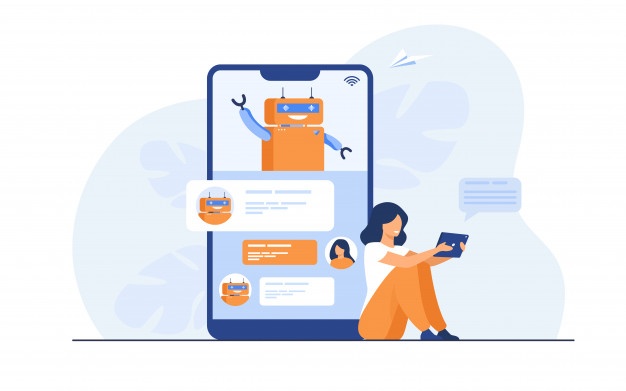
Contact Center, Productivity, Innovations
4 Effective Ways To Enhance Profit In Contact Centers

In today's competitive market, sellers have been required to provide more than just a good product or service to customers to stay relevant and ahead of the curve. It is imperative to focus on providing an experience that stands out to the customers, making them feel like visiting again. One way of achieving this is via individualistic attention offered to every customer. With the right tools, providing personalized customer service isn’t a tough job. Let’s discuss 10 such methods via which you can provide more personalized experience to your customers.
Contents:
1. Building customer profiles
2. Customer-centered goals and vision
3. Employee training to be more customer-receptive
4. Taking the Omnichannel road
5. Building self-service channel
6. Offering support services through social media channels
7. Reinforcing sales and customer service representatives with CRMs
8. Using customer feedback
9. Utilising employee feedback
10. Periodic evaluation of customer service experience
One of the most fundamental ways to personalise customer service involves taking the time to really know and understand the customers who use the company's services or products on a repetitive basis. Various data points like demography, income level, their preference, buying behavior etc can be easily captured. Analysis of such data can find patterns between who the most loyal customers are and what their most common needs, their wants and expectations are. This is the starting point of personalization as the system now can provide personalized service based on the choices customers make.
CRMs can capture all these data, aiding the company to create customer profiles. Marketing team can outreach to customers with personalized communication based on the customer profile. Similarly the service agent can as well make personalized communication to customers and provide a memorable experience.
Providing a central idea of customer goals backed by timely user-data will allow agents to be more precise in their problem-solving mission. In other words, enable your agents with the access to customer sentiments, popular customer behaviour and previous customer journey information. With all such data at bay, the agent can provide straightforward solutions that meets the customer’s expectations. In the long-run, customer success can be achieved through such approach.
Agents who offer scripted responses are taking away the human essence from customer service. It is extremely frowned upon in the modern customer service era. Be it over chat or call, the agent must be equipped enough to go beyond the script and sympathise with the customer. No customer wants a monotonous, mechanical agent responding to complaints as from a pre-written script. When agents become more customer receptive, their responses improve and the customer feels more welcomed by the brand.
In today's increasingly connected world, customers expect to conduct business and transactions through whichever routes they find most convenient at a particular time. It does not matter if the route or 'channel' is face-to-face, over email, video conferencing or over chat or call, customers expect the required businesses to be present wherever and whenever they need access to it. An Omnichannel software can enable a seamless integration of all channels, for a unified customer experience.
If the business in question is not providing its services over multiple channels simultaneously - and of the same quality - the customers may switch to any other competitor that does and makes conducting business more convenient for them. An Omnichannel Customer Experience platform efficiently drives the engagement across different channels.
Self-service refers to a firm providing information that clients can refer to for the issues they might be facing. Today's customer service environment is defined by speed and ease of service. In such an environment, it is important to reduce frustration on the part of the customer by helping them find solutions to a range of problems by themselves.
Knowledge Base is a prevalent method that would contain a detailed FAQ section along with some basic solutions to commonly reported problems. A Chatbot is another instant no-human based service, where the customer can prompt at the issue via the brand’s app or website. The Chatbot will mimic human behaviour without the time lost in human error and delay in communication. The bot will even personalize the conversation based on the CRM integration. Once the customer verifies their details, the chatbot will offer relevant prompts and suggestions for the customer to proceed.
Self-serving customers are on the rise and automation is the future of customer service.

Social media has not only taken up a large amount of space in everyone's life today, it also keeps growing in its reach and importance. Various studies have indicated that every year, the number of companies using their social media channels to respond to their customer queries have been on a steady rise.
Both the companies and customers are equally easily accessible via social media. The amount of activity generated by users on such channels exhibits a vast and mostly untapped potential growth and can provide customer service resolution in a timely manner. Social media channels have often been seen to generate lively and broad-based discussions on products and services. Social listening provides the insight to these discussions. Such analysis and response to such requests are important for personalized customer service.
CRM systems help in augmenting the services by providing a number of functions to greatly personalise customer service experience. Some of the CRMs integrate with Telephony CTI and can share realtime customer data such as their personal information made consensually available, call history and purchase history, with the agent is over a call with the customer. As a result, such CRM systems can greatly increase a firm's customer service response by utilising such information to provide personalised greetings and solutions. A more advanced system can offer agent assistant so that the agent can provide better and more persoanlised response to the customer and it is no more scripted and monotonus.
Feedbacks are incredible and very direct method of observing the medium to long term assessment of the products and services offered by the company in question. Of course, this is notwithstanding the fact that many of the platforms that host such reviews enable businesses to directly interact with customers. Not only does such direct communication help the customer pen down exactly what they expect from the company but a response from the latter helps the customer feel more directly involved in the process of not just receiving better treatment for the services they require, it helps them feel included in the entire process of improving the service quality - thus massively helping to personalise the customer experience.

Functioning at the very frontlines of the customer service department means all employees of the department would have a lot of hands-on experience of the trends in issues that customers face. They can help in recognising and pointing out the demands and requirements fielded by the customer in regards to the service or product they are receiving. It then becomes an absolutely imperative task to offer these employees an appropriate platform to offer their ideas and constructive feedback on how to provide better service experience and personalise customer experience. Such a platform has potential to go on and stimulate small but important changes that, over time, massively improves the company's customer service experience.
Customer needs and expectations are constantly evolving. However, one cannot predict these from scratch. To keep up with customer needs, one must periodically collect customer feedback. Customer feedback will also reveal where the administration is lacking: be it product or man-power.
Constantly monitoring preferences and seeking feedback from all available sources helps the company stay updated with market demands, too. This enables the agents to stay on top of their KPI’s as well. However, it is not merely enough to monitor such information. It is necessary to maintain and store such knowledge for future references which will eventually help to ease the pressure on service representatives and manage changes as demanded by customers.
With these practical and easily achievable methods, brands can improve and augment the level of customer service offered. End of the day, the experience your customer has is completely dependent on what you can offer.

Contact Center, Productivity, Innovations
4 Effective Ways To Enhance Profit In Contact Centers

Contact Center, Dialer, Omnichannel, Productivity
5 Ways Predictive Dialers Make Outbound Contact Centers Successful

Customer Experience, Contact Center
5 Ways Customer Interaction Improves Your Business In 2025